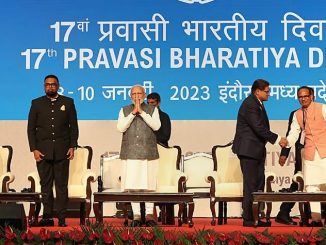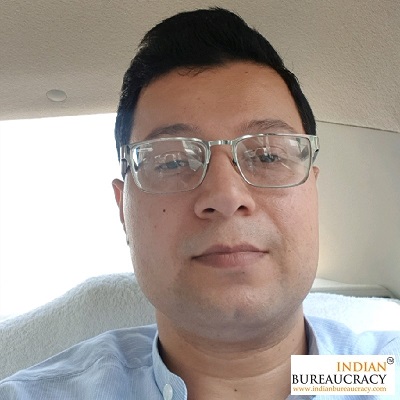
Minister of Railways and Commerce & Industry, Shri Piyush Goyal has informed that Indian Railways have taken several key measures, as a result of which the number of consequential train accidents have decreased from 118 in 2013-14 to 104 in 2016-17, to 73 in 2017-18 and further to 59 in 2018-19. These are the lowest ever figures in the history of Indian Railways.
Safety is accorded the highest priority by Indian Railways and all possible steps are undertaken on a continual basis to prevent accidents and to enhance safety of passengers. Following steps/measures have been taken to prevent accidents:-
- Rashtriya Rail Sanraksha Kosh (RRSK) has been introduced in 2017-18 for replacement/renewal/upgradation of critical satety assets, with a corpus of ₹1 lakh crore for five years, having annual outlay of ₹ 20000 crore.
- Indian Railways has already adopted the technological upgradation in safety aspects of coaches and wagons by way of introducing Modified Centre Buffer Couplers, Bogie Mounted Air Brake System (BMBS), improved suspension design and provision of Automatic fire & smoke detection system in coaches. These modifications are being provided in newly manufactured coaches and wagons on a regular basis.
- Conventional ICF design coaches being replaced with LHB design coaches of Mail/Express trains in phased manner.
- A GPS based Fog Pass device is being provided to loco pilots in fog affected areas which enables loco pilots to know the exact distance of the approaching landmarks like signals, level crossing gates etc.
- In order to improve safety, modern track structure consisting of Prestressed Concrete Sleeper (PSC), 60 KG, 90 or higher Ultimate Tensile Strength (UTS) rails, fanshaped layout turnout on PSC sleepers, Steel Channel Sleepers on girder bridges is used while carrying out primary track renewals.
- Long rail panels of 260 M/130M length are being manufactured at the steel plant to minimize number of Alumino Thermit joints in the track.
- Provision of Thick Web Switches (TWS) is planned for all important routes of IR. To expedite provision of TWS, procurement of Thick Web Switches has been decentralized to zonal railways.
- Ultrasonic Flaw Detection (USFD) testing of rails to detect flaws and timely removal of defective rails.
- Mechanization of track maintenance is being carried out to reduce human errors and track management system has been introduced on Indian Railways for development of database and decision support system and to decide rationalize maintenance requirement and optimize inputs.
- Electrical/Electronic Interlocking System with centralized operation of points and signals are being provided to eliminate accident due to human failure and to replace old mechanical systems. Track Circuiting of stations to enhance safety for verification of track occupancy by electrical means instead of human element. Axle Counter for Automatic clearance of Block Section (BPAC) to ensure complete arrival of train without manual intervention before granting line clear to the next train and to reduce human element.
- Train Protection and Warning System: Train Protection and Warning System (TPWS) based on European Technology ETCS Level-1, a proven Automatic Train Protection (ATP) System to avoid train accident /collision on account of human error of Signal Passing at Danger (SPAD) or over speeding, has been provided on
(i) Noapara – Kavi Subhash section of Kolkata Metro (28 RKMs) (ii) Chennai – Gumidipundi suburban section of Southern Railway (50 RKMs), Basin Bridge – Arrakkonam section of Southern Railway (67 RKMs) (iii) Hazrat Nizamuddin – Agra section of Northern/North Central Railway (200 RKMs).
- Auxiliary Warning System (AWS): An ATP called Auxiliary Warning
System (AWS) is presently functional on 413 RKMs in the Mumbai suburban section of Central Railway (289 RKMs) and Western Railway (124 RKMs).
- Train Collision Avoidance System (TCAS): TCAS is an Automatic Train Protection (ATP) System being developed in association with 3 Indian manufacturers. The system has been installed on Lingampalli – Vikarabad – Wadi, Vikarabad – Bidar section (250 RKMs) on South Central Railway. Extensive field trials and safety validation of the system to Safety Integrity Level 4 (SIL-4) by Independent Safety Assessors (ISA) has been completed. Product of all the 3 firms has been approved by RDSO for developmental order for speeds up to 110 Kmph in Absolute Block Sections.
Each and every consequential train accident on Indian Railways (IR) is inquired into either by the Commission of Railways Safety under the Ministry of Civil Aviation or by Departmental Enquiry Committee to analyze for the identification of the role of operational issues and other factors in train accidents. Every inquiry gives its findings about the cause of the accident, fixes responsibility and suggests measures to prevent accidents. Various corrective measures are taken by the Railways as per the findings of the inquiry reports so as to improve the safety aspect over the Indian Railways.
For post accident analysis, a Crew Voice & Video Recording System (similar to Black Box provided in airplanes) is developed for recording of crew communication/interaction in loco along with track side view. This system is provided on 05 locomotives for fields trials.







Leave a Reply
You must be logged in to post a comment.